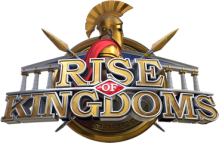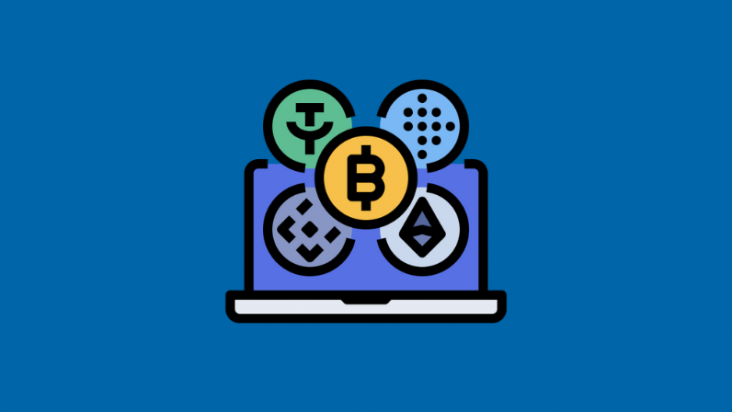
The year 2021 marked a significant chapter in the video gaming industry, witnessing an amalgamation of groundbreaking trends, innovative technology, and captivating game narratives. The post-2019 era, particularly 2021, saw a continued surge in the popularity of free-to-play (F2P) models, multiplayer online experiences, and mobile gaming dominance. The global pandemic further accelerated these trends, as people turned to gaming as a primary source of entertainment during lockdowns. Additionally, 2021 was a year of remarkable events in the gaming world, including the much-anticipated releases, major updates to existing games, and landmark esports tournaments that captivated millions worldwide. The article presented most popular video games in 2021!
| Rank | Game | Genre | Developer | Publisher | Platform | Release Date | |
|---|---|---|---|---|---|---|---|
| 1 |  | Battle royale | PUBG Studios | Tencent / Bluehole | Windows, Android, iOS, Xbox One, PlayStation 4, Stadia, Xbox Series X/S, PlayStation 5 | December 20, 2017 | |
| 2 |  | MOBA | TiMi Studio Group | Level Infinite, Garena | Android, iOS, iPadOS, Nintendo Switch | October 12, 2016 | |
| 3 |  | Beat 'em up | Neople | Nexon / Tencent | PC | August 2005 | |
| 4 |  | Action role-playing | miHoYo | miHoYo | Android, iOS, PlayStation 4, Windows, PlayStation 5 | September 28, 2020 | |
| 5 |  | GCS / MMO | Roblox Corporation | Roblox Corporation | Windows, macOS, iOS, Android, Xbox One, Meta Quest 2, Meta Quest Pro, PlayStation 4 | September 1, 2006 | |
| 6 |  | Casual mobile game | Moon Active | Moon Active | Android, iOS, iPadOS | 2015 | |
| 7 |  | Augmented reality | Niantic | Niantic / Nintendo | iOS, Android | July 6, 2016 | |
| 8 |  | Puzzle | King | King (Activision Blizzard) | App Store, Google Play, Windows, Phone Store, Windows, macOS, Linux | April 12, 2012 | |
| 9 |  | Battle royale | Garena | Garena | Android, iOS, iPadOS | December 8, 2017 | |
| 10 |  | MOBA | Riot Games | Riot Games / Tencent | Microsoft Windows, macOS | October 27, 2009 | |
| 11 |  | Simulation, Idol Management | Cygames, DMM Games - Asia | Cygames | Android, Windows, iOS | February, 2021 | |
| 12 |  | MMORPG | NCSoft | NCSoft | Windows, Mac OS X | September 3, 1998 | |
| 13 |  | Strategy | Qookka Games | Alibaba Group / Koei Tecmo | Android | May 23, 2019 | |
| 14 |  | Strategy | Lilith Games | Lilith Games | Android, iOS, Windows, Mac OS | April 2, 2018 | |
| 15 |  | Puzzle, Simulation | Playrix | Playrix | Android, iOS, iPadOS, Microsoft Windows, macOS | September, 2017 |
Best Selling Video Games in 2021

As we delve into the specifics, let’s explore the top releases that dominated the charts in 2021, highlighting their publishers, genres, revenues, and the unique features that contributed to their astounding success.Listed games can be also called ad best selling games of all time because many of them are in the top for several years in a row.
PUBG

- Publisher: Krafton / Tencent
- Genre: Battle Royale, Multiplayer
- Revenue: $3,233,600,000
For the second year in a row the game topped the top grossing video games. PUBG’s meteoric rise in revenue can be credited to its immersive gameplay and the pioneering of the ‘battle royale’ genre. Its success was amplified by strategic partnerships and esports tournaments, which enhanced its visibility. The game’s cross-platform capability widened its reach, enabling players from different devices to engage together. Seasonal content updates, including new maps and modes, along with a robust in-game cosmetic system, encouraged both player retention and spending. Effective advertising through social media platforms and influencer collaborations further bolstered its player base and revenue.
Honor of Kings (Arena of Valor)

- Publisher: Tencent
- Genre: MOBA (Multiplayer Online Battle Arena)
- Revenue: $2,800,000,000
This game’s success is largely due to its deep integration within the esports scene and its appeal to a broad demographic, including a significant number of female players. The constant introduction of new heroes and themed events kept the game fresh and engaging. Strategic advertising campaigns, particularly in Asia, and the use of popular cultural references and tie-ins, significantly increased its appeal and player spending. In 2021, Honor of Kings leveraged a notable tie-in with the cosmetic brand M·A·C, which was part of a crossover marketing strategy. This collaboration involved integrating elements of M·A·C into the game, enhancing its appeal through a blend of gaming and lifestyle products, which appealed to a broad audience, including female players
Dungeon Fighter Online (DFO)

- Publisher: Nexon / Tencent
- Genre: Action RPG (Role-Playing Game)
- Revenue: $2,690,000,000
DFO’s success stems from its nostalgic arcade-style gameplay combined with modern RPG elements. The game maintained its revenue through regular content updates, including new character classes and story expansions. Its monetization strategy focused on cosmetic items and convenience features, appealing to both hardcore and casual players. Effective use of online advertising and community events helped in retaining a dedicated player base.One notable initiative was the launch of the DFO Content Creator – Season 3, where players with characters over level 100 could apply to become official content creators for the game. The program was designed to include various types of creators such as streamers, video creators, casters/bloggers, and art creators, encouraging them to share their DFO-related content with the community. The rewards for content creators included in-game items like Skeleton Keys, Kaleido Boxes, and Guide of Wisdom Tickets, as well as a Neo Premium Contract (Plus) for 30 days and a special DFO Content Creator title
Genshin Impact

- Publisher: miHoYo
- Genre: Action RPG
- Revenue: $1,900,000,000
Genshin Impact’s open-world adventure and gacha system captivated a global audience. Its revenue was significantly driven by the game’s regular introduction of new characters and regions, which encouraged ongoing player investment. For example, the most successful was the Inazuma region in the 2.0 update on July 21. Inazuma, inspired by Japan and known as the Nation of Eternity, comprises six main islands, including Narukami, Yashiori, Serai, Tsurumi, Watatsumi, and Kannazuka. The region is characterized by its strong winds, thunderstorms, and is ruled by the Electro Archon, Baal. Three of the six islands were made available initially, with the rest expected in subsequent updates. High-quality, cinematic advertisements and collaborations with well-known brands and influencers across various platforms played a crucial role in attracting new players. The game also leveraged social media and community events to maintain player engagement and spending.
Roblox Mobile

- Publisher: Roblox Corporation
- Genre: Game Creation System, Massively Multiplayer Online
- Revenue: $1,400,000,000
Roblox’s platform allows users to create and monetize their own games, leading to a vast and diverse content library. Its revenue growth in 2021 can be attributed to the platform’s ability to foster a strong community of creators and players. The most unexpected event was the Roblox Community Fund (RCF) with an initial $10 million fund to support the next chapter of education expansion and other innovative initiatives on the platform. The RCF aimed to provide grants to educational organizations that developed curriculum and educational experiences leveraging the Roblox platform in immersive and compelling ways. This initiative reflected Roblox’s commitment to empowering students and educators to explore learning online through hands-on experiences, problem-solving, and collaboration, thus further strengthening the community by intertwining educational aspects with entertainment. Strategic marketing campaigns aimed at children and teenagers, alongside partnerships with popular brands for in-game content, significantly contributed to its revenue. The platform’s social features and virtual events also played a key role in player retention and monetization.
Coin Master

- Publisher: Moon Active
- Genre: Casual, Strategy
- Revenue: $1,400,000,000
Coin Master’s blend of slot machine mechanics with base-building and social interaction proved to be a winning formula. Aggressive advertising on social media platforms, featuring celebrities and influencers, significantly increased its visibility and player base. For example, campaign featuring the Spice Girls, highlighting the game’s engaging content through celebrity endorsements. This approach played a significant role in increasing the game’s visibility and attracting new players. The game’s simple yet addictive gameplay encouraged daily logins, while its social features, like card trading and competitions, enhanced player engagement and in-game purchases.
Pokémon Go

- Publisher: Niantic
- Genre: Augmented Reality, Location-Based Game
- Revenue: $1,300,000,000
Pokémon Go’s continued success is attributed to its innovative use of augmented reality and location-based gameplay, encouraging players to explore the real world.The game utilizes augmented reality (AR) to superimpose Pokémon into the real world through the player’s device camera. This feature enhances the immersion by allowing players to find and catch Pokémon as if they were in the actual environment around them.Regular updates featuring new Pokémon and special events kept the game fresh. Strategic partnerships with brands and cities around the world, along with effective use of social media advertising, helped in attracting new players and re-engaging lapsed ones.
Candy Crush Saga

- Publisher: King (Activision Blizzard)
- Genre: Puzzle
- Revenue: $1,300,000,000
The enduring popularity of Candy Crush Saga is due to its simple, addictive gameplay and regular content updates. Targeted advertising across multiple platforms, coupled with cross-promotion within King’s other games, effectively attracted a wide demographic. The game’s monetization strategy, focusing on microtransactions for additional lives and boosters, capitalized on player impatience and desire for progression.
Garena Free Fire

- Publisher: Garena
- Genre: Battle Royale
- Revenue: $1,200,000,000
Free Fire’s success in the competitive battle royale market can be attributed to its optimization for lower-end devices, making it accessible to a broad audience. The game’s regular updates, including new characters and collaboration events with popular celebrities and IPs, kept the content fresh and engaging. Strategic use of influencer marketing and social media campaigns significantly increased its visibility and player base.
League of Legends

- Publisher: Tencent
- Genre: MOBA (Multiplayer Online Battle Arena)
- Revenue: $1,100,000,000
LoL’s revenue is bolstered by its strong esports ecosystem and loyal fan base. The introduction of new champions and skins, coupled with major global tournaments, maintained high player engagement and spending. Such champions as Viego, Gwen, Akshan, Vex added fresh gameplay dynamics and narratives to the game, contributing to its ongoing popularity and player engagement. The game’s marketing strategy, focusing on community building and content creation, along with effective use of social media and influencer partnerships, ensured its place as a top revenue generator.
Uma Musume Pretty Derby

- Publisher: Cygames
- Genre: Simulation, Idol Management
- Revenue: $990,000,000
This unique blend of horse racing simulation and idol management captured the hearts of players with its charming characters and compelling gameplay. The game’s success is largely due to its innovative concept, which combines sports simulation with character development and idol performance elements. Strategic marketing campaigns, including captivating anime-style advertisements and collaborations with real-world horse racing events, significantly contributed to its popularity in Japan. Regular content updates and live events within the game kept the player base engaged and willing to spend on in-game currency and items.
Lineage

- Publisher: NCSoft
- Genre: MMORPG (Massively Multiplayer Online Role-Playing Game)
- Revenue: $981,000,000
Lineage’s enduring success can be attributed to its loyal player base and the introduction of new content that keeps the game fresh and engaging. The game capitalized on nostalgia while continuously evolving with new expansions, character classes, and in-game events. Aggressive advertising strategies in its core markets, combined with the leveraging of its strong community and regular competitive events, have kept players invested both financially and emotionally in the world of Lineage.
Three Kingdoms Tactics

- Publisher: Alibaba Group / Koei Tecmo
- Genre: Strategy
- Revenue: $931,000,000
Inspired by the historical novel “Romance of the Three Kingdoms,” this strategy game has successfully attracted fans of Chinese history and strategy gaming. The game’s revenue was driven by its deep strategic gameplay, combined with collectible heroes and alliances. Effective use of targeted advertising in Asian markets, alongside collaborations with historical dramas and literature, made it particularly appealing to its target audience. Seasonal updates and events based on historical battles kept the community engaged and spending.
Rise of Kingdoms

- Publisher: Lilith Games
- Genre: Strategy
- Revenue: $926,000,000
Rise of Kingdoms offers a unique combination of real-time strategy and world exploration. Its success is attributed to the game’s expansive world, where players create their own civilizations and engage in battles with players worldwide. Strategic partnerships with historical figures and civilizations as in-game content, coupled with targeted social media campaigns, have attracted a diverse player base. Regular updates featuring new content and mechanics have encouraged sustained player investment.
Homescapes

- Publisher: Playrix
- Genre: Puzzle, Simulation
- Revenue: $894,000,000
Homescapes blends match-3 puzzle gameplay with home renovation simulation, creating an engaging narrative that keeps players returning. The game’s success is driven by its compelling storyline, character development, and regular introduction of new levels and challenges. Aggressive advertising, including engaging video ads and cross-promotion with other Playrix games, has effectively attracted a broad audience. The game’s monetization strategy, focusing on in-app purchases for boosters and lives, has been key to its high revenue.
Trends in video games in 2021
In 2021, the gaming industry witnessed significant trends that underscored its evolution, particularly in the context of ongoing global challenges posed by the pandemic. These trends not only highlighted shifts in consumer behavior and game development but also pointed towards evolving strategies within the gaming marketing niche. Comparing these trends to 2020 provides a deeper understanding of the industry’s dynamics and the pandemic’s impact on gaming in 2021.
1. Rise of Mobile Gaming
One of the most prominent trends in 2021 was the continued rise of mobile gaming. Games like “Honor of Kings,” “Genshin Impact,” and “Coin Master” exemplified this trend, achieving substantial revenue largely attributed to their accessibility and the widespread adoption of smartphones. The pandemic further fueled this trend as individuals sought convenient entertainment options during periods of lockdown, making mobile games more appealing due to their ease of access and social connectivity features.
2. Free-to-Play (F2P) Model Dominance
The F2P model remained dominant in 2021, as seen with top-grossing games such as “PUBG” and “Roblox Mobile.” This model proved to be particularly lucrative, as it removed barriers to entry, allowing a larger audience to engage with these games. The pandemic likely exacerbated this trend, as more people looked for cost-effective entertainment options. The success of these games underscored the effectiveness of monetizing through in-game purchases and microtransactions.
3. Integration of Social Features
Games that integrated social features effectively saw increased engagement and revenue. For instance, “Roblox Mobile” fostered a strong community by allowing users to create and share their own games, while “Coin Master” utilized social interaction mechanics, such as card trading and competitions, to enhance player engagement. The pandemic, which limited physical social interactions, likely contributed to the value players placed on social connectivity within games, making titles with strong social components more appealing.
4. Influencer Marketing and Collaborations
The use of influencer marketing and strategic collaborations became more pronounced in 2021. Games like “PUBG” leveraged influencer collaborations and esports tournaments to enhance visibility and engagement. “Genshin Impact” also utilized high-quality, cinematic advertisements featuring well-known brands and influencers, drawing in a broad audience. The pandemic may have amplified the impact of these marketing strategies, as increased screen time and social media usage created more opportunities for influencers to connect with potential gamers.
5. Regular Content Updates
Maintaining player interest through regular content updates was a key trend in 2021. Games that consistently introduced new content, such as “Genshin Impact” with its new characters and regions, succeeded in keeping the player base engaged and willing to spend. The pandemic’s extended periods at home likely heightened the demand for fresh and engaging content, making this strategy even more effective.
6. Pandemic as a Catalyst for Growth
Overall, the pandemic served as a significant catalyst for the gaming industry’s growth in 2021. With more individuals turning to digital entertainment amidst lockdowns, gaming became a primary source of leisure and social interaction. This increased demand accelerated existing trends, such as the rise of mobile gaming and the F2P model, and emphasized the importance of social features and engaging marketing strategies to captivate a broader, more diverse audience.
In summary, the gaming industry in 2021 was marked by the continued rise of mobile gaming, the dominance of the F2P model, the importance of social connectivity, innovative marketing strategies, and the necessity of regular content updates. The pandemic undeniably influenced these trends, amplifying the industry’s growth and shaping its trajectory in a year of unprecedented challenges and opportunities.
The high revenues of the best-selling video games in 2021 can be attributed to several key factors. First, the continued popularity of free-to-play (F2P) models allowed a wider audience to access these games, with revenue generated through in-game purchases and microtransactions. Second, the global pandemic increased the demand for digital entertainment, boosting player engagement and spending. Additionally, regular content updates, strategic partnerships, and effective advertising campaigns (including social media and influencer collaborations) played crucial roles in maintaining player interest and driving revenue.
Mobile games dominated the list due to their accessibility and the widespread use of smartphones. The convenience of playing games on a device that is always within reach allowed for greater player engagement and more opportunities for in-game purchases. Mobile games also benefited from the ability to easily integrate social features, encouraging viral growth through social networks and word of mouth. Moreover, the mobile gaming market saw significant investment in advertising and user acquisition, further driving their dominance.
The pandemic had a significant positive impact on the video gaming industry in 2021. With more people staying home due to lockdowns and social distancing measures, there was a surge in demand for digital entertainment options. Video games offered an engaging form of escapism and a way to socially connect with others in a time of isolation. This led to increased player bases, longer play times, and higher spending in games, contributing to the record revenues seen by many titles in the industry during the year.








